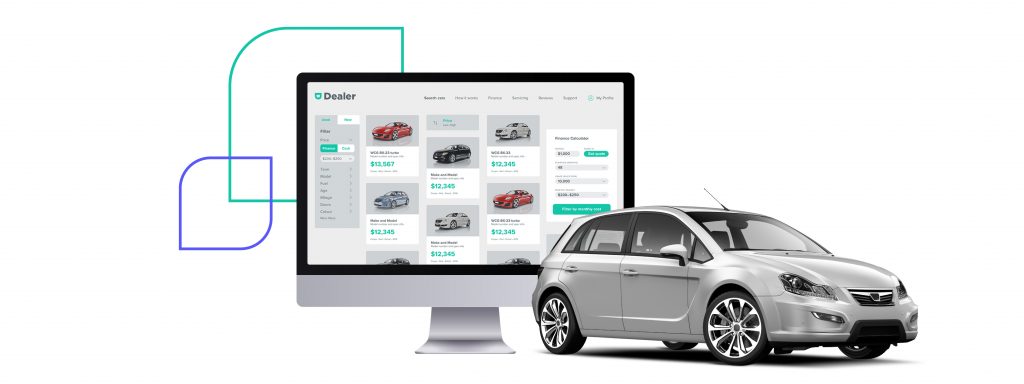It’s the era of on-demand.
Today’s customer expects same-day service from every business they interact with, with giants like Amazon, Netflix, and Uber paving the way for an always-on-demand economy.
The auto finance industry is no exception to the pressures of these influences. It’s imperative for lenders and their dealerships to be able to offer a fast and painless digital experience to keep up with the expectations of their customer base.
1 – Offer a seamless loan application process
Car loan applications aren’t known for their simplicity – especially with a customer keen to get their hands on a vehicle quickly so they can resume their daily lives.
While many lenders are moving this application process online, there are still lengthy, multi-page forms for customers to sort through. The ideal for both customer and dealer should be capturing only the minimal information upfront to make a credit decision to avoid wasting anyone’s time. Open banking technology offers the handy option to automatically complete these checks, speeding up the process for all parties.
2 – Let the borrower build their ideal loan
Customers like the flexibility of tailoring a deal to match their needs. Options to modify and build a package online let the borrower decide on their own terms the amount they want to pay upfront, how quickly they want to pay it off, and whether they want to add any ancillary products, services, or accessories.
The ability to set a budget is absolutely invaluable to borrowers, as they can browse different cars and back-end product options while knowing there won’t be any sudden disappointment when they realize the overall price tag.
3 – Use digital contracts and signatures
While eSignatures have been around for years, the pandemic accelerated their adoption as an equal to the paper signature, if not a preference for many consumers. Common challenges that were previously cited as a barrier to adoption were complexity and cost. Fortunately, these are no longer the case – many options exist at a wide range of price points, offering a variety of services, such as DocuSign, to support the transition.
Finance software systems for a wide range of budgets come with APIs to support integration with such eSignature and eDocs tools, providing an easy, secure means to process and store customer documentation.
4 – Digitize and streamline verifications
For an auto loan, lenders typically conduct several verifications for the borrower. Depending on the credit segment and line of business, they will verify the borrower’s identity, residence, income, and employment during the process. From the borrower’s perspective, making copies or taking pictures of multiple documents is a painful process.
Digitizing verifications is one of the greatest untapped sources of efficiency and customer service for an auto loan. Lenders can choose from a growing number of providers to automate the verification of identity (e.g., LexisNexis, Onfido, Lightico), residence (e.g., Neustar), and income (e.g., The Work Number, Plaid).
If a lender still finds itself requesting proof documents from the borrower, it’s a much easier process if there’s an option to directly upload them to a portal. Once the document is in-house, machine-learning can verify its legitimacy. This is often much more efficient than an employee confirming all of these details manually.
5 – Offer convenient vehicle pick-up options
The pandemic dramatically changed this step of the car-buying process. Many buyers are opting for a painless curbside pick-up option, now offered by a number of major auto retailers. Deliveries are much more common now, with increased adoption driven by direct-to-consumer retailers like Carvana, Vroom, and Shift.
Even so, in-person, contact-free, and drop-off delivery options shouldn’t be seen as a replacement for a traditional experience. Capacity and resource to provide buyers with choice is the best way to ensure a positive customer experience.
6 – Flexibility
According to Cox Automotive, consumers are making it clear that digital retailing is here to stay. Reports indicate 64% of shoppers want to move toward an online purchase process the next time they buy a vehicle. However, amid the excitement for digitization, the majority of buyers today aren’t actually completing the purchase online.
Again, this comes down to the offer of choice. Flexibility around options and the ability to choose whether they want to collect from a dealership, or resume any step of the finance process, is important to meet the needs of auto finance’s wide customer base. As an example, Toyota offers this flexibility and customer control over the finance journey with their SmartPath digital suite.
Ultimately, while consumers like the idea of buying a car completely online, the industry is not fully equipped – but the critical word to keep in mind is yet.
A same-day digital car buying process is a possibility that auto finance lenders should aspire to, though this requires a rethink of both the online application process and how resources can be used to their best advantage. Staff will need to oversee some elements of the journey, such as checking the vehicle itself, drop-offs, and final printouts if the customer wants a physical contract.
Auto finance technology that can accommodate varied customer demands and operate seamlessly alongside a human workforce will make all the difference.
To find out how to get the technology that can do exactly that, get in touch today.
